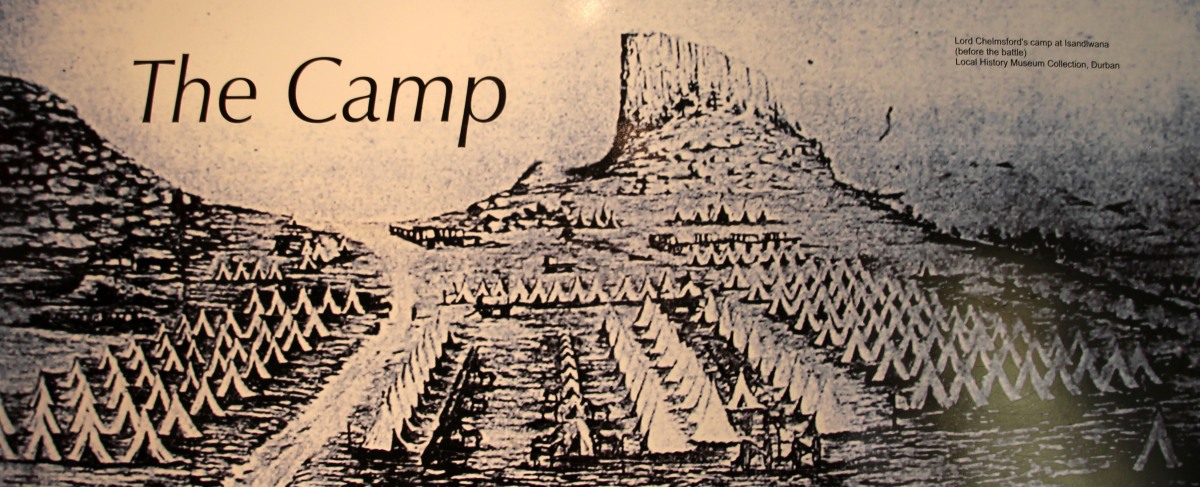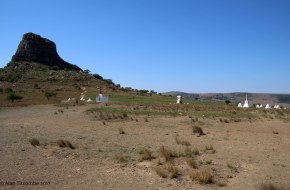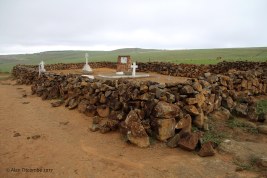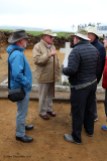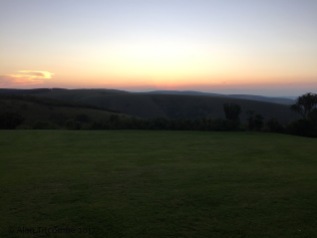A 12 year old boy watched the big screen, enthralled as a small group of British ‘Redcoats’ fought huge numbers of Zulu warriors and won. This was the feature film Zulu, shown at school as our end of term treat way back in 1972. The school boy was, as you may have guessed, none other than myself. Back then my understanding was both very simple and very wrong, the British Redcoats were the good guys and the Zulu warriors were the bad guys.
43 years on and my fascination with the film Zulu has grown into an interest in the Anglo-Zulu war and a much more sophisticated understanding of what occurred. History shows us that the British were the aggressors while the Zulus were defending their homeland. The real cause of the war seems likely to have been the local British High Commissioner and his policies, while the British soldiers followed orders to ‘do or die’.
For many years it has been my ambition to visit the battlefields of the Anglo Zulu war and especially Rorke’s Drift and Isandlwana. This ambition I shared with my chum Tony, and so on 4th November 2017 we duly headed for Heathrow airport to catch a plane to Johannesburg.
Before we move on to the pictures I should add that as usual this page is a vehicle for my photographs, any historical narrative and comments are in support of those pictures. The page is not intended to be a detailed narrative of the war. As usual all errors and omissions are entirely my own.
The Battle of Isandlwana
This was the first major battle of the Anglo-Zulu war and a battle that the British lost. The question why the British lost at Isandlwana is traditionally answered by pointing to specific factors such as their dispositions, failure to fortify the position and lack of ammunition where it was needed on the firing line. All of these factors were undoubtedly relevant but in my view the real reason for the British defeat was the superior Zulu tactics and, of course, their immense bravery. It is generally accepted that the casualties were something like 1,300 for the British side (including the Natal Native contingent) and 3,000 for the Zulu side. The Zulus won but at a great cost, after the battle the Zulu King Cetshwayo is reported to have said “Alas, a spear has been thrust into the belly of the nation”.
Fugitive’s Drift
After the defeat at Isandlwana a small number of survivors attempted to escape down a rough and rocky track toward a drift (crossing) on the Buffalo River. This crossing has since became known as Fugitive’s Drift. The most well known of these survivors attempting to escape were Lts Teignmouth Melvill and Nevill Coghill who were attempting to save the Battalion’s Queen’s Colour. Both men crossed the Buffalo River but were killed on the far side of the river, the Natal Bank, probably by Sothondose’s people who lived there.
Today Fugitive’s Drift has changed somewhat. The path down to the Drift is much more over grown and difficult to traverse than it was in 1879. Conversely the actual crossing is much easier, especially given the semi-drought conditions that this part of South Africa has endured for the last 3 years or so. In 1879 the Buffalo River was high and running fast, very unlike the pictures I took.
The Battle of Rorke’s Drift
Against orders the Undi corps and the iNdluyenwge regiment of the Zulu army crossed the Buffalo River and attacked the British Army commissariat and hospital post at Rorke’s Drift. Around 100 able bodied British soldiers successfully defended the post and themselves from around 4,000 Zulu warriors. There are a number of reasons why these 100 men were able to hold back such a large force of Zulu warriors, which include a good defensive position, a good supply of ammunition and a good supply of spare Martini Henry rifles. The latter point is worthy of brief consideration, the problem being that the Martini Henry got hot when in continuous use causing the poorly made cartridges to jam in the breech. When this happened at Rorke’s Drift the defenders were able to pick up a fresh rifle while their own gun cooled down and so maintain a high rate of fire.
In attack the Zulu were quite fearless against bullets, but showed rather more concern when faced with the bayonet, had this not been the case then the defender’s ability to hold may have been in serious doubt.
The Battle of Khambula
Khambula is a significant but relatively little know battle in the Anglo-Zulu War. From the British perspective it demonstrated that lessons had indeed been learned from the defeat at Isandlwana including a greater respect for the abilities of their Zulu enemy.
Death of the Prince Imperial
Eugene Louis Jean Joseph, the Prince Imperial of France, was the son of Emperor Napoleon 3rd. After the defeat of the French in the Franco – Prussian War Louis was sent to England and settled with is mother at Camden House, Chiselhurst, Kent. Louis was not eligible to join the British Army for political reasons but was allowed to enroll as a cadet at Woolwich and by special consent was attached to A-battery, Royal Horse Artillery and given permission to travel Natal as a volunteer.
On 1st June 1879 he was allowed to accompany Lt Carey and 7 troopers on a reconnaissance deep into Zululand looking for a new camp site for the army. It was while on this mission at around 15:30 hours that the group were attacked and the Prince was killed.
Today the site is a peaceful spot and standing with your back to the small adjacent village, looking over the rolling country it is still possible to imagine something of what took place some 135+ years ago.
The Battle of Ulundi
This is where the old Zulu order finally came to an end. Ulundi was the Zulu capital and on 4th July 1879 a large British square advanced inexorably upon it. Attempts by the Zulu king Cetshwayo to agree a cease fire had come to nothing, mainly because Lord Chelmsford had nothing to gain from it personally and wanted to regain some of his reputation by a complete defeat of the Zulu nation.
Of all the battlefields we visited I found this to be the saddest for it was here that the old Zulu order was finally wiped out in a battle that was very one-sided due to European technology. Today in the 21st Century all that remains to mark the passing of the old Zulu order is a rather strange looking monument in a small, park like, grass square surrounded by barbed wire. As I boarded our bus for the hotel I couldn’t help thinking that Cetshwayo and his people deserved a more fitting monument to mark where their capital once stood.
Further reading
So much has been written about the Anglo-Zulu war that making any particular selection can only be a personal choice. Accordingly I list below just a few of my favourite publications that I have found to be of of great use and interest:
- The Zulu War – A Pictorial History by Michael Barthrop – this book is an excellent read to get an overview of the war.
- Rorke’s Drift – Zulu War – by Ian Knight and Ian Castle – this book is in the Battleground South Africa series. It is particularly excellent for visiting the battlefield comprising as it does the history and a narrative of what to see on the ground.
- Isandlwana – Zulu War – by Ian Knight and Ian Castle – this book is another in the Battleground South Africa series. It is particularly excellent for visiting the battlefield comprising as it does the history and a narrative of what to see on the ground.
- Rorke’s Drift 1879 by Ian Knight – this is an Osprey publication in the Campaign Series.It’s a great short read on the battle at Rorke’s Drift.
- British infantryman versus Zulu Warrior – by Ian Knight – another Osprey book, this gives an interesting perspective by comparing the principle combatants in the war.
- The Zulu war Then and Now – it will come as no surprise that this publication is by the After the Battle team. This is another excellent publication and includes specific sections on the battlefields today and the war on film.
- Field Guide to the War in Zululand and the Defence of Natal – by J P C laband & P S Thompson – this book is really for the specialist, but I particularly enjoy it having an interest in fortifications and field works and liking maps.

In addition to the printed word there is of course much material on the internet. The site I found most useful is this one Battlefields Route Kwazulu Natal You’ll see that I have referred to this site a number of times in preparing this page.
The trip
Wanting to take the hard work out of this trip Tony and I signed up to a Leger Battlefield Tour, specifically K12SAB Boer and Zulu Wars of South Africa . This turned out to be a good decision.
Our guide was Anthony Coleman who was both extremely knowledgeable and an excellent host. Fortunately our group was quite small at only 14 people and this allowed Anthony to use a mini bus which allowed us to use some very small roads – tracks really – to get right into the center of the battlefields.
Accommodation was of course provided and we stayed at 3 memorable hotels, all ideally suited to the theme of our trip:
- Royal Country Inn – this was our first hotel where we stayed for 5 nights. A 5-star air conditioned hotel this is not, but it is full of ‘olde world charm’ with an excellent guest lounge adorned with Anglo-Zulu war memorabilia. The two rooms that Tony and I had, featured very high ceilings (great for keeping the room cool) and very comfortable beds. The food was excellent as was the welcome.
- Natal Spar Hotel – we stayed for 2 nights at our second hotel. This was rather more modern without the atmosphere of the Royal Country Inn, but we were equally comfortable and well placed to continue our tour. The restaurant offered a good range of tempting selections for dinner and the staff were keen to please. The bar was particularly worthy of note with Karaoke for our first night and yes we joined in!.
- Mtonjaneni Lodge – our final hotel had the best views, stunning in fact especially at sunset. Accommodation is in the form of well appointed chalets with very comfortable beds and satellite TV. Food is good – we had an excellent Ox Tail for night one and a equally splendid barbecue on the second night – and the hotel staff very welcoming. A big bonus on site is a private Zulu museum with one of the largest collections of Zulu artifacts in the country.
And finally…
So for those interested in the Anglo-Zulu war would I recommend a visit to South Africa and would I recommend a Leger tour? The answer is a definitive yes in both cases. South Africa is a beautiful country which respects and preserves its history. The Leger tour took all the effort and stress out of the visit and provided an excellent historical commentary. If you are thinking of making a similar trip my advice is “go do it” – you won’t be disappointed.

I dedicate this page to the Zulu people of the past who fought so valiantly in defence of their homeland against an imperial power bent on conquest and also to the Zulu people of today who are so welcoming to the descendants of that power while continuing to be so rightly proud of their heritage.

